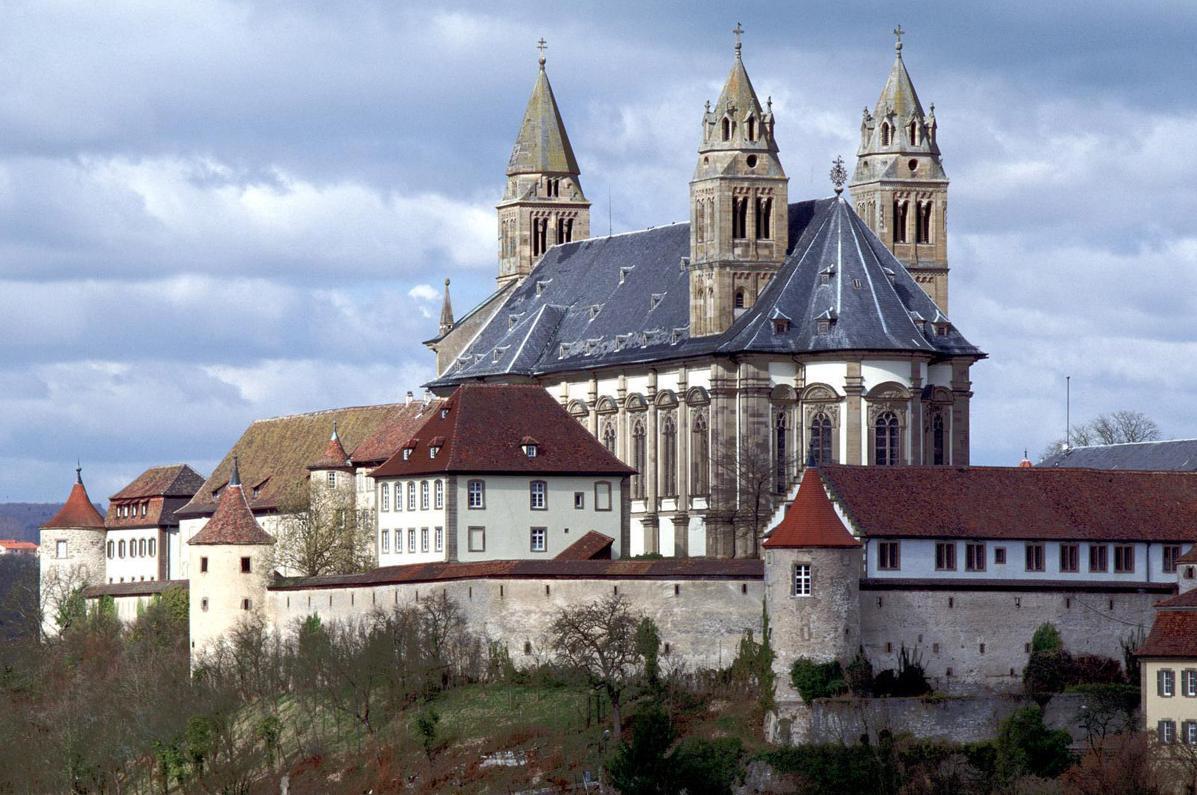Sights
Startseite > Sehenswürdigkeiten > Monastery Großcomburg
Monastery Großcomburg
Comburg, also spelled Komburg and called Großcomburg, is a former Benedictine monastery and later knight's foundation. Today, it is located on the territory of the city of Schwäbisch Hall in the district of the same name in northeastern Baden-Württemberg.
- Comburg 5 , 74523 Schwäbisch Hall
Around 1078, the Counts of Comburg-Rothenburg founded a Benedictine monastery under the jurisdiction of the Diocese of Würzburg on the site of their castle, where one of the founders, Count Burkhard, entered as a monk. The first monks came from Brauweiler in the Rhineland, but between 1086 and 1088 a monk from Hirsau was appointed abbot, so that from that time on Komburg Monastery was counted among the monasteries of the Hirsau Reform. Besides the count's family, their relatives and neighbors also supported the foundation. The Mainz ministerial Wignand donated such large properties to the monastery that he was considered another monastery founder. After a period of prosperity, which can also be seen in the numerous buildings, the 13th century led to a decline of the monastery, which resulted in economic collapse in 1326. In addition, there were internal tensions and disputes between the abbot and the convent about the use of the monastery properties. In the second half of the 14th century, the situation improved again. However, the economic recovery was accompanied by a softening of the rules of the order. The protective bailiwick lay with the founder family until their extinction, fell to the Staufers in 1138 and was claimed by the Schenken von Limpurg in 1254; however, the monastery was able to fend off this claim and remained under royal bailiwick, which Ludwig der Bayer transferred to the imperial city of Schwäbisch Hall in 1318/1319. In 1484 the bailiwick fell as an imperial fief to the Bishop of Würzburg, who appointed the Schenken von Limpurg as sub-bailiffs.


By loading the map, you agree to Google's privacy policy.
Learn more

